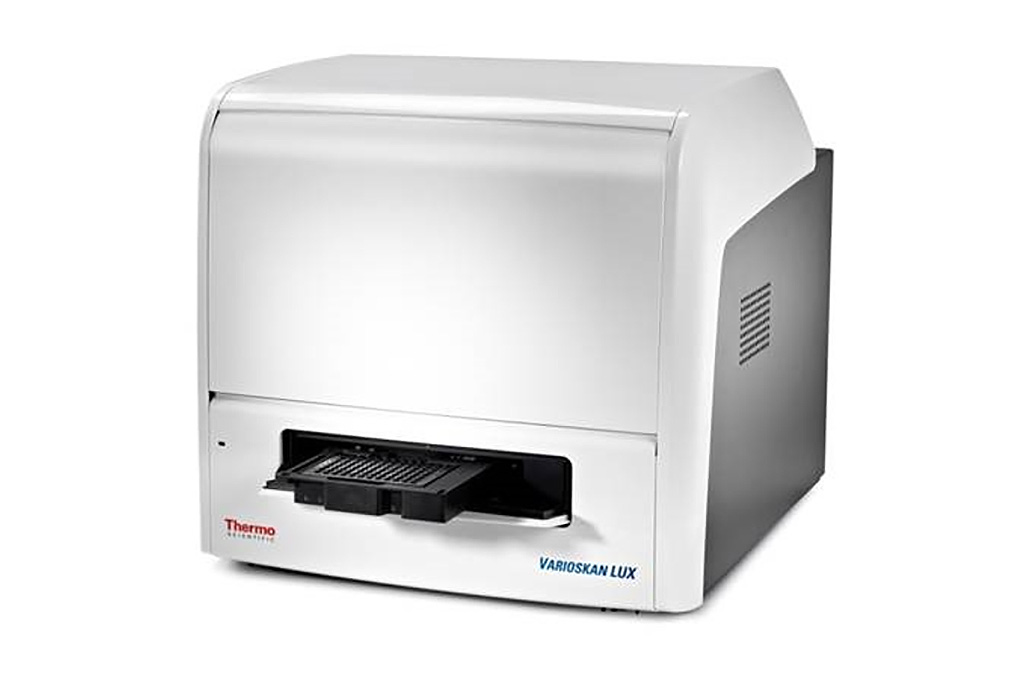Serum Free Thiols Predict Cardiovascular Events
By LabMedica International staff writers
Posted on 08 Jun 2020
Cardiovascular disease (CVD) is among the leading causes of morbidity and mortality globally, and during the past decade, the number of CVD-associated deaths has increased by 12.5%. Free thiols associate with favorable disease outcomes in many patient cohorts, and the current hypothesis is that oxidative stress might also play an important role in cardiovascular disease.Posted on 08 Jun 2020
Oxidative stress is defined as the imbalance between the production of reactive oxygen species (ROS) and antioxidants. Serum free thiols (R-SH, sulfhydryl groups) reliably reflect systemic oxidative stress. Since serum free thiols are rapidly oxidized by reactive species, systemic oxidative stress is generally associated with reduced serum free thiol levels.

Image: The Varioskan LUX multimode microplate reader (Photo courtesy of Thermo Fisher).
Scientists at the University Medical Center Groningen (Groningen, the Netherlands) included in a large, prospective population-based cohort study, a total of 5,955 participants. Study participants having urinary albumin concentrations ≥ 10 mg/L were invited to visit the outpatient clinic, as well as a random selection of participants with urinary albumin concentrations < 10 mg/L.
The team measured a variety of biochemical parameters including high-sensitive C-reactive protein (hsCRP) and urinary albumin excretion (UAE) were measured by nephelometry (Dade Behring Diagnostics, Marburg, Germany); serum total cholesterol and fasting glucose were measured by dry chemistry (Eastman Kodak, Rochester, NY, USA). Serum total protein was measured using spectrophotometry (Roche Modular, Roche, Mannheim, Germany). High-density lipoprotein (HDL) cholesterol was measured using a homogeneous method (direct HDL, Aeroset System, Abbott Laboratories, Abbott Park, IL, USA). Measurement of serum free thiols (R-SH, sulfhydryl groups) was performed and background absorption was measured at 412 nm using the Varioskan microplate reader (Thermo Scientific, Breda, the Netherlands).
The team reported that the mean protein-adjusted serum free thiol level was 5.05 ± 1.02 μmol/g of protein. Protein-adjusted serum free thiols significantly predicted the risk of CV events, even after adjustment for potential confounding factors (hazard ratio [HR] per doubling 0.68). Similarly, protein-adjusted serum free thiols were significantly predictive of the risk of all-cause mortality (HR per doubling 0.66). Stratified analyses revealed lower HRs for subjects with a lower body mass index (BMI), without hypertension, and without diabetes. Conversely, HRs were lower in subjects with albuminuria.
The authors concluded that that protein-adjusted serum free thiol levels are significantly predictive of the risk of CV events and all-cause mortality in the general population. Free thiols might harbor great potential as an easily measurable biomarker in the current primary and secondary CVD prevention strategies, and the results highlight the potential significance and clinical applicability of serum free thiols since they are amendable to therapeutic intervention. The study was published on May 27, 2020 in the journal BMC Medicine.














